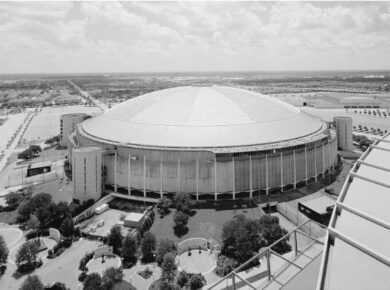Alphonse Balat (15/05/1818 – 16/09-1895)
Iron (and later steel) and glass are a perfect match.
And where is this more evident than in the magnificent greenhouses that were built at the end of the 19th – beginning of the 20th century in the US and Europe? We all know the Palmenhaus Schönbrunn and the Temperate House at the Kew Royal Botanic Gardens in London, but today I would like to take a chauvinistic look at the Royal Greenhouses in Laeken, with a focus on the Winter Garden designed by Alphonse Balat.

Under his direction, various renovations and annexes were made to the palaces in Brussels and Laeken, including the famous tropical plant greenhouse, the so-called Winter Garden of the Laeken Palace. The Winter Garden (built between 1874 and 1876) was the first large glasshouse to be erected on the royal estate at Laeken in 30 years’ time.

Balat’s conservatories already heralded the formal language and spatial conception of Art Nouveau. Indeed, the greenhouses are not isolated objects, but part of a kind of glass city, in which the play of views and reflections together with the exotic vegetation lead to surprising spatial relationships so typical of the art nouveau of, for example, Victor Horta, one of Balat’s most famous pupils. Horta’s teacher had succeeded in creating a synthesis of glass, iron and stone.

The greenhouses were a rewarding source of inspiration for the young Belgian architecture of the time. Glass and iron were used very creatively in the ‘jardins d’hiver’ of the town houses for the upper middle classes in Brussels.
About the Author:

Bruno Dursin – Managing Director at Believe in Steel. Bruno has more than 30 years of experience in promoting steel & steel solutions. His clients benefit from his extensive network within the building industry.



